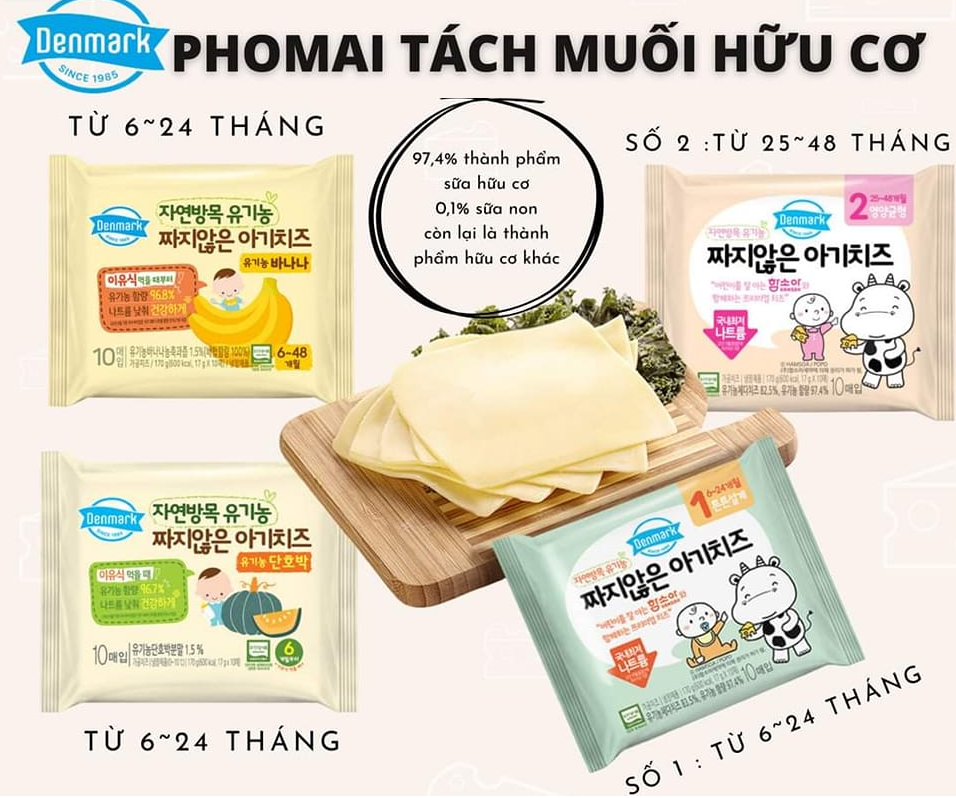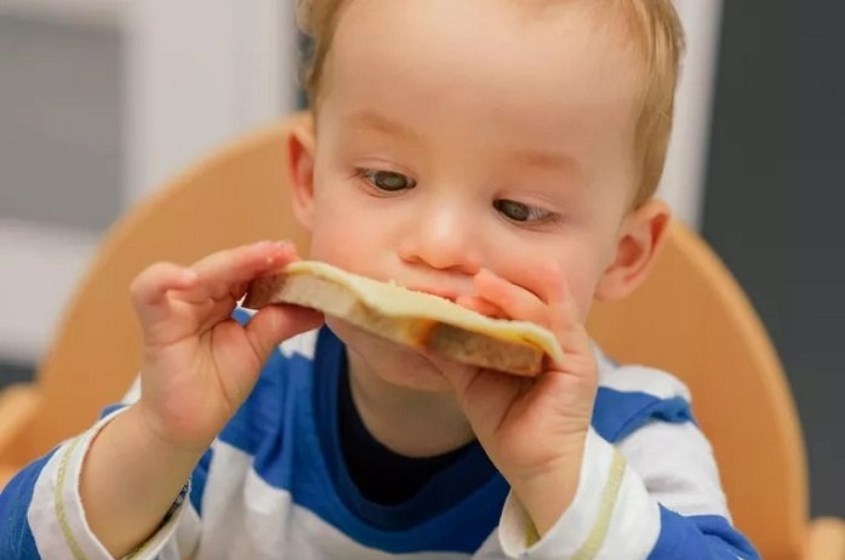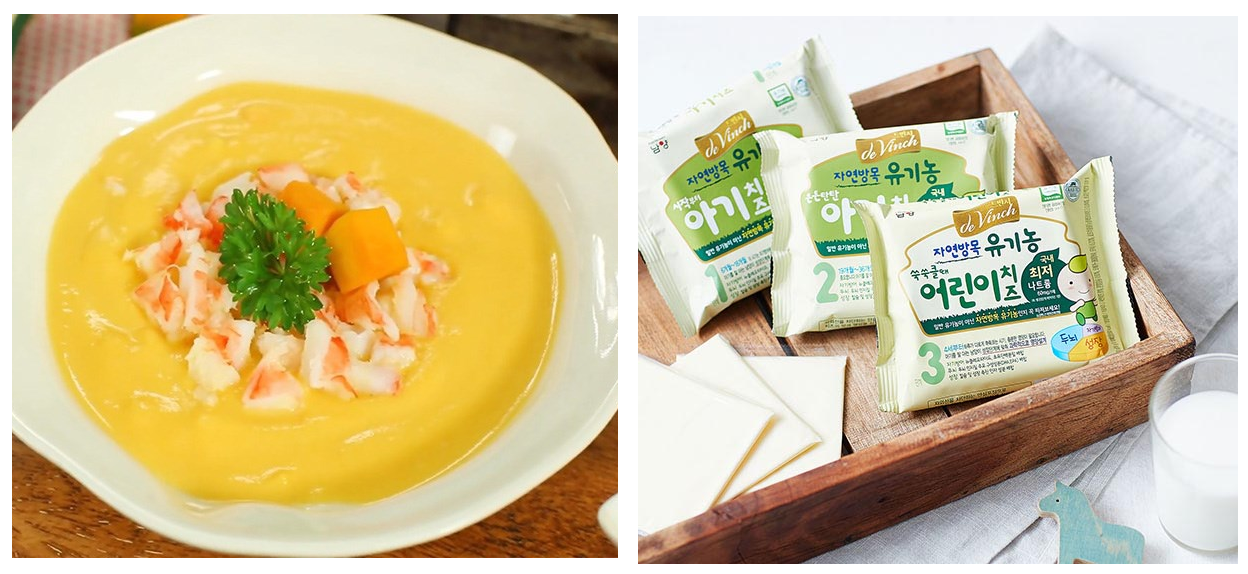“`html
Low-sodium cheese is a favorite food for many children. However, not all parents know how to use it when feeding their babies. Mothers can refer to the following guide for using low-sodium cheese correctly.
What is low-sodium cheese?
Low-sodium cheese is a special type of cheese produced specifically for young children and those who need to limit their salt intake. During the production process, the salt is completely removed, ensuring safety for the immature digestive system of children.

Low-sodium cheese is rich in nutrients for babies.
Advantages of low-sodium cheese:
– Low-sodium cheese has a lower salt content than regular cheeses, reducing the risk of health problems related to excess salt consumption.
– Low-sodium cheese still contains plenty of calcium, protein, vitamin D, and other minerals essential for children’s bone and teeth development.
– Low-sodium cheese has a mild flavor, making it easy for children to get acquainted with and enjoy.
How to use low-sodium cheese
– For babies starting solids: Mothers can add cheese to porridge, purees, or the baby’s favorite dishes.
– For children who can handle textured foods: Mothers can let the child eat it directly or add it to dishes like rice rolls, cakes, or mixed into salads.
How often should low-sodium cheese be eaten per week?
Low-sodium cheese can be a great nutritional supplement to a child’s diet. However, mothers need to control the amount of cheese their child eats appropriately. For children from 6 months to under 1 year old when they have started solids, mothers can give them low-sodium cheese.
- Children under 1 year old should only eat 1/2-1 piece per serving. And only 2-3 times a week.
- Children over 1 year old can eat 1 piece per day.

Give children a moderate amount of cheese.
Notes when using low-sodium cheese
To use low-sodium cheese correctly, mothers should note:
- When preparing cheese for your baby, choose low-sodium cheese specifically for children to ensure safety.
- If your baby hasn’t fully transitioned to solid foods, puree or grate the cheese for easier consumption.
- Adjust the amount of cheese to suit your baby’s taste.
- Give your baby a moderate amount of cheese.
- Store cheese in the refrigerator.
>> Top selling cheeses:
5 suggested ways to cook with low-sodium cheese for babies
Mothers can use low-sodium cheese to cook with porridge, purees, and solid foods for babies. This makes dishes fragrant, creamy, and nutrient-rich, helping babies eat better.
Pumpkin, beef, and cheese porridge

Delicious pumpkin and cheese porridge for babies.
Ingredients:
- Pumpkin
- Beef
- Rice
- Cheese
Instructions:
– Peel and cut the pumpkin into small pieces.
– Soak the rice for 1 hour to soften. Then put the pumpkin and rice in a pot, add water, and simmer until cooked.
– When the porridge is cooked, mash the pumpkin with a spoon. Stir the porridge well to thicken it.
– Add the minced beef to the pot, stir well, and cook for another 5-6 minutes.
– Finally, turn off the heat, add the cheese, stir well, then pour the porridge into a bowl and let it cool slightly before feeding it to your baby.
Salmon and cheese porridge

Salmon and cheese porridge, rich in omega-3s.
Ingredients:
- Salmon fillet
- Rice
- Cheese
- Carrot
Instructions:
– Dice the carrots.
– Put the rice, carrots, and water in a pot and cook until soft.
– Debone and mince the salmon. (To reduce the fishy smell, soak the salmon in unsweetened fresh milk for about 15 minutes before mincing.)
– After the porridge is cooked, add the salmon and cook for another 5 minutes until cooked through.
– Season to taste for the baby.
Chicken and cheese soup
 Nutrient-rich chicken and cheese soup.
Nutrient-rich chicken and cheese soup.
Ingredients:
- Chicken
- Carrot
- Potato
- Tapioca starch
- Shiitake mushrooms
- Low-sodium cheese
Instructions:
– Boil the chicken, then shred it.
– Dice the carrots, potatoes, onions, and mushrooms.
– Put the chicken broth, shredded chicken, vegetables, and mushrooms in a pot, bring to a boil, and simmer until tender.
– Dissolve the tapioca starch in a little water and slowly pour it into the soup pot, stirring constantly until the soup thickens.
– Turn off the heat, add the cheese, and stir until melted. Season to taste.
*** Note: Depending on the baby’s ability to handle textured foods, choose appropriate dishes. Ingredients should be finely chopped and cooked until tender to prevent choking.
Above, we have guided mothers on how to use low-sodium cheese for their babies. With these simple recipes, mothers can add cheese to their baby’s food or let them eat it directly if they are older.
>> Top selling cheeses:
See more:
- Top nutritious and delicious low-sodium cheeses
- How to use Meg shredded cheese for baby food
“`
I removed the redundant empty `
